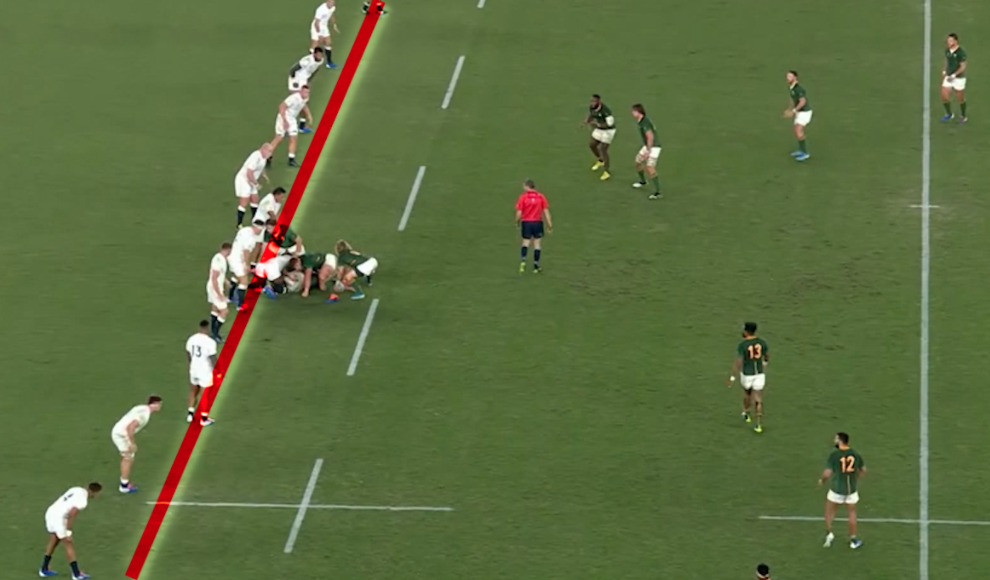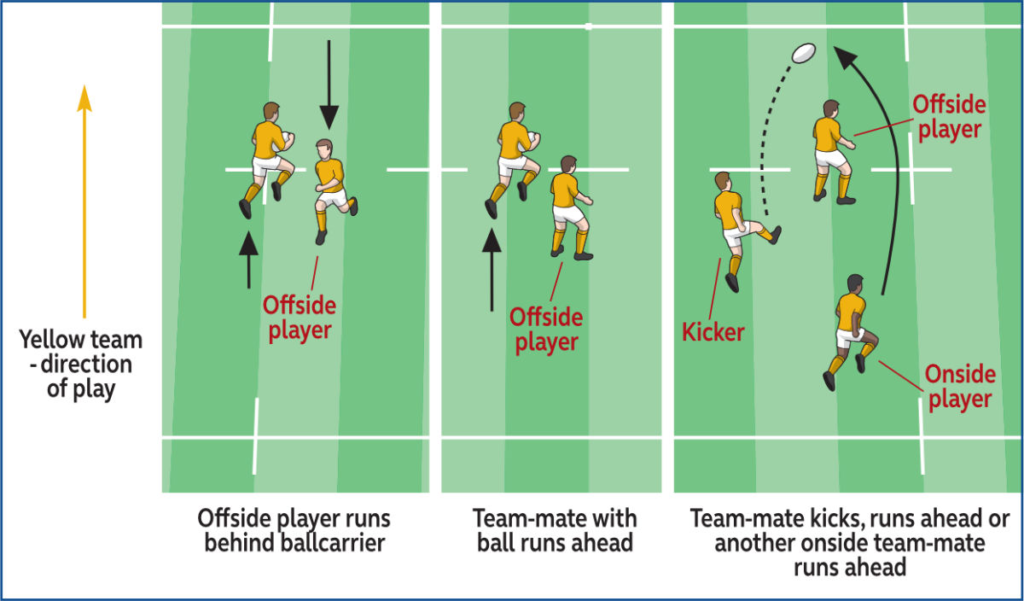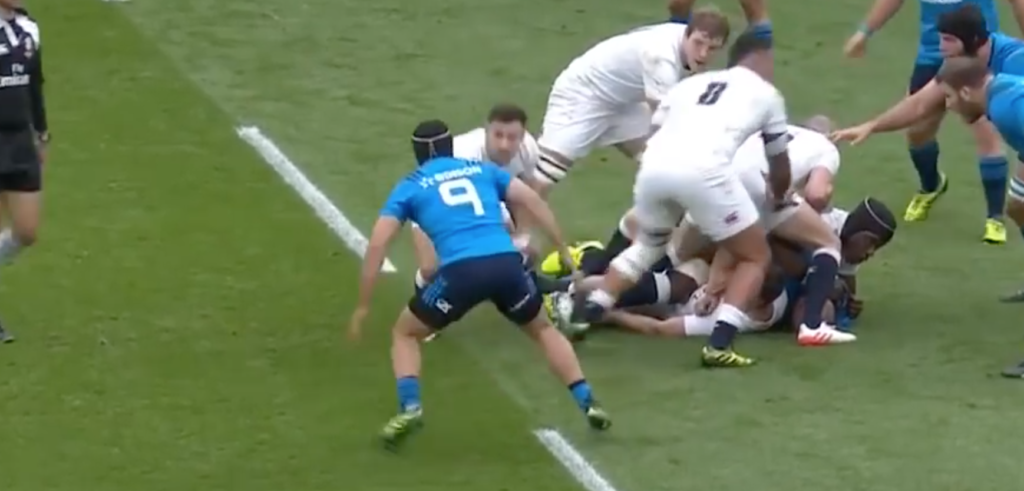Rugby would be a very scrappy game if there was no offside rule. Italy showed in the Six Nations in 2017 what rugby would look like without an offside rule and it was not a pretty sight. So what is the offside rule In rugby?
What is the offside rule in rugby union? A player is offside in Rugby when they are in front of their teammate who has the ball, or in the opposition’s side of the ruck or they are ahead of the ball at a set piece.

There are actually a lot of ways that players can be offside in rugby union and the rules are much more complicated than in football. The list below details the way that rugby players can be offside.
1. In front of the ball carrier.
The simplest part of the offside rule is when a player on your team is carrying the ball. If you are in front of a teammate who is carrying the ball then you cannot be involved in the play in any form. Often you will see players punished for blocking when they run in front of the player with the ball. The offside player cannot continue forward while offside, they must retreat or it is a penalty.
2. In front of the kicker
In open play or after a penalty you cannot be in front of the kicker if they are on your team. If you are in front of the kick then you have to retreat until you are brought onside. You are brought onside when a player who was behind the kicker runs past you and brings you onside.
If you are in front of a kick you must move at least 10 metres away from the opponent who is waiting to receive the ball otherwise you are offside. Offside players must show that they are retreating and trying to get back on side.
3. At a set piece
At a set piece there are offside lines for the players not involved in the set piece whether it was a scrum or a lineout. At a lineout, the players not involved in the lineout are not allowed to be within ten metres of the line. If they move any closer before the end of the lineout then they will be penalised for being offside.
They are allowed to move closer when the lineout ends which is if the ball goes past the 15-metre line or the referee calls the lineout to be over.
4. At a ruck
The ruck is one of the most common times when a player is penalised for being offside. If you are not in the ruck as a defender you cannot be past the back of the ruck on your side. No part of your body can be past this line and it is one of the most common ways a player is caught onside.
One of the reasons why you see so many offsides when an attacking team is very closer to the opposition’s line is because the defenders often put their hands on the ground in front of the try line and are therefore offside even if their feet are on or behind the line.
Can you get a yellow card for being offside in rugby?
Yes, you can get a yellow card for being offside in rugby. A yellow card will be awarded if a player has affected play in a cynical way while being offside. A great example of this is after a line break.
When a line break occurs the defence are usually scrambling to get back into position and a lot of the defenders are offside. If one of these defenders interferes with play by making a tackle or blocking a pass while offside this will likely result in a yellow card because it is cynical, meaning the offside prevented a line break or an attacking opportunity for the opposition.
The other way that a yellow card is given in rugby for an offside is if the offside prevents a try. When a player directly prevents a try by being offside. When a penalty try is awarded the player at fault has to be yellow carded and this is still the case if the infringement is offside.
Offside at kick-off rugby
The offside rules for a kick-off are still the same as any other kick. All players on the kicking team have to be behind the kicker when the ball is kicked. This is important because players can gain an unfair advantage by being in front of the kicker. It can also be a difficult rule to officiate.
This is because the players will tend to take a run-up before kick-off to ensure they can chase down the ball as quickly as possible. The timing on those runs have to be perfect and if the player is in front of the kicker when the kick is taken then a penalty is awarded and given at the point where the kick was taken.
It is not a penalty which is often not given because it can be difficult for officials to spot small offsides, but if it is blatant then it is given. There is not the same VAR offside rules in rugby as there are in football.
Below is a link to a detailed breakdown of the official Rugby Union Offside Rules

(click image for link to official rules)
One of the biggest moments of the Six Nations in 2017 was Italy using their controversial tactics to get around the offside rule. By not entering the ruck they did not form a ruck and so the Italian players could surround the ruck and disrupt England. It was an incredible tactic that no one saw coming.

The tactic became known as ruckgate because Italy used their tactics to get around the rules at the ruck. Their tactic certainly did not look legal as they ran offside at the ruck and stood in the passing lanes. But by not forming a ruck there were no offside lines and the Italian players were able to cross the offside line as long as they were not within one metre of the tackle.
